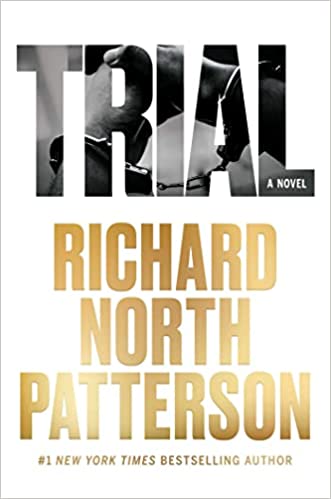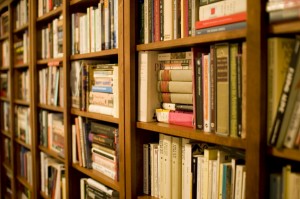
It’s far too easy these days to get depressed about the state of journalism. Legacy outlets – especially those that depend on and once thrived in print – are continuing to shrivel. Just this week, word came that National Geographic lost the last of its staff writers and will end newsstand sales next year. Meanwhile, it was also reported that the circulations of the 25 largest U.S. newspapers slipped 14% to just 2.6 million in the year ending in March, accelerating the decline in print that has afflicted most of the nation’s top papers (as well as killed off many of its smaller ones).
And yet, it’s not as if all the news is dire. For one, digital readership continues to grow among the bigger newspapers. As the PressGazette reported, the New York Times Company announced that its digital-only subscriptions rose to 9 million as of the end of the first quarter of 2023, an increase of 8% from a year earlier, even as circulation of its print product slipped 10% to a bit over 296,000. Meanwhile, The Wall Street Journal recorded 3.3 million digital subscribers in March, up from 2.9 million in the final quarter of last year, even as its print circulation slipped 13% to about 609,650.
More to the point, the growth of alternative all-online media outlets seems to be continuing. To take one example, the nonprofit States Newsroom network has spread to operations in 34 states and it is planning an ambitious agenda of coverage of the presidential race. One of my favorite members of the network is the Nebraska Examiner, an operation staffed by prize-winning refugees of the Omaha World-Herald (which, sadly, has shrunk under the ownership of Lee Enterprises).
The Examiner continues to hold the feet of Nebraska politicians to the fire as it covers state government well, just as other members of the States Newsroom network do. Indeed, the outlets arose because local papers were cutting back on their coverage of state government.
Another example of intriguing online efforts is the Flatwater Free Press, which seeks to cover a broader array of subjects of statewide interest. It’s akin to a for-profit operation, The Colorado Sun, a venture staffed mostly by former Denver Post journalists. These outlets don’t cover local news as closely as dying local papers once did (city councils, zoning boards, school boards, etc.), but they do a sterling job on topics of broader interest. Consider this Flatwater piece about the prospects for restricting gender-affirming care and this interesting piece from the Sun about psychedelic drugs.
Will these alternative operations ever match the breadth and depth of coverage that metros and local dailies once offered? That seems hardly possible, as their staffs are a fraction of the size of once-robust legions of journalists at the larger papers. And yet, they are providing opportunities for young people who would find few at shriveled print outfits. One of the more productive folks at the Nebraska Examiner, for instance, is still a student at the University of Nebraska-Lincoln, Zach Wendling, whom I was privileged to have in a class. He’s interning among the handful of seasoned veterans at the outlet. (The place employs four staffers and Zach).
Inexorably, the shift away from print will continue, of course. Young people have little or no interest in news on paper and those of us who still like to hold a print product (in my case, magazines including The Atlantic, Harper’s and The New Yorker) are aging out. And nothing compares to the immediacy of the online realm.
Whether that shift will ultimately do in even the biggest names in print remains a huge question mark. Outlets such as the Times and the WSJ are smartly creating lots of alternative products – newsletters and podcasts and such – to keep their edge. But smaller papers are hard-pressed to keep up, especially those owned by vulture-capital-backed chains more focused on milking the papers on the way down rather than growing them or their online efforts. (See the Chicago Tribune, whose average print circulation in the six months up to March slipped 23% to just over 82,000, according to the PressGazette, putting it at ninth place among the top 25 papers. The Tribune is a property of the notorious Alden Global Capital.)
We have long been in a painful period of transition in news, of course. That’s not new to anyone familiar with the business’s decline over the last decade or longer. It may be that the biggest names will endure and innovate their way through. Prospects for the rest seem bleak, even as the outlook for the little online-only innovators seems fairly bright (so long as the public continues to donate to them).
Perhaps a new book by Jeff Jarvis will guide us. As its promotional material tells us, “The Gutenberg Parenthesis” traces print from its beginnings to the digital present. Print, we’re told, “was as disruptive as the digital migration of today.” Now, we are immersed in the changes that may make the print era little more a very long parenthesis between pre-print darkness (though still an era filled with creativity) and what has yet to fully reveal itself. He’s mostly optimistic, it seems, though not about the prospects for conventional media, whose virtues and faults he recounts.
“For half a millennium, the mediators of media-editors, publishers, producers- controlled the public conversation,” Jeff writes. “Now we may break free of their gatekeeping, agendas, and scarcities-while at the same time risking the loss of the value these institutions have brought in recommending quality, certifying fact, and supporting creativity. What must we create to replace these functions? The internet finally allows individuals to speak and communities of their own definitions to assemble and act, killing the mass at last. I celebrate the closing of the Mass Parenthesis. As for Gutenberg’s Parenthesis, I do not cheer its end. Instead, I believe this is the moment to honor its existence and all it has brought us, and to learn from it as we enter a next age.”
Fittingly or not, Jeff’s book is on offer in hardback, though I suspect the slightly less costly ebook sales will trump that format ($27 in hardback on Amazon; $14.34 on Kindle).










